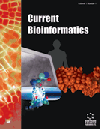
Full text loading...

Ovarian cancer (OC) is a fatal female reproductive system cancer with a high mortality rate and is hard to detect at an early stage. Recent studies have indicated that alternative splicing plays an important role in OC progression by activating genes and pathways involved in tumorigenesis. Circular RNAs (circRNAs) have also been found to play a regulating role in tumor progression and present their potential ability in alternative splicing regulation. However, the underlying mechanism by which circRNAs regulate alternative splicing events (ASEs) in OC remains unclear.
In this study, we performed a comprehensive transcriptomic study on the RNA-seq data of our collected tumor and normal samples from OC patients, aiming to investigate the regulatory roles of OC-specific circRNAs in aberrant splicing events and their underlying pathways in tumorigenesis.
We conducted a genome-wide regulatory network with strong correlations from 300 differentially expressed (DE) circRNAs and 1,150 aberrant ASEs, mediated by 31 DE SFs. Analyses of this network revealed that dysregulation of circRNAs may lead to aberrant ASEs that are closely involved in ovarian tumorigenesis. In addition, two crucial circRNAs, circ_AKT3 (hsa_circ_0000199) and circ_GSK3B (hsa_circ_0008797), were identified due to their significant roles in the network and associations with multiple tumor-related functional pathways.
These findings suggest that OC-specific circRNAs may participate in tumor progression by indirectly regulating groups of ASEs through multiple SFs, rather than through direct interaction. Subnetwork analyses centered on the two hub circRNAs revealed that their associated ASEs are functionally clustered and involved in coordinated biological processes relevant to tumor biology.
This study provides novel insights into the regulatory pathways by which circRNAs are involved in OC progression, offering clues for discovering diagnostic biomarkers and therapeutic targets.

Article metrics loading...

Full text loading...
References


Data & Media loading...
Supplements